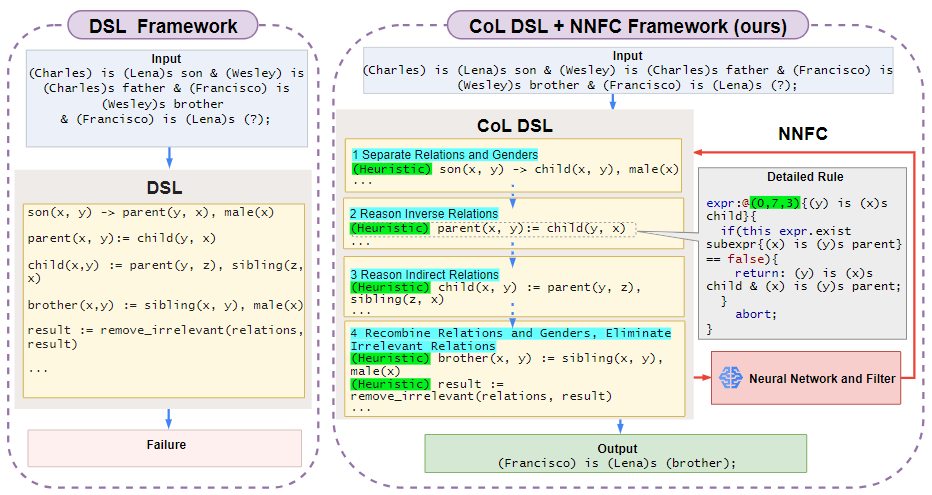

Program synthesis, the automated creation of computer programs, is rapidly evolving. While existing methods have shown promise, they often fall short when dealing with complex tasks. They frequently lack the fine-grained control and flexible modularity needed for real-world software development. This is where COOL steps in.
COOL (Chain-Oriented Objective Logic with Neural Network Feedback Control) is a groundbreaking neural-symbolic framework designed to overcome these limitations. It achieves this through two key innovations:
Chain-of-Logic (CoL): CoL meticulously organizes the program synthesis process into a structured sequence of stages, providing precise control and improving interpretability. Think of it as a carefully planned roadmap guiding the synthesis process towards the desired outcome.
Neural Network Feedback Control (NNFC): NNFC integrates neural networks to dynamically refine the synthesis process, correcting errors and adapting to changing conditions in real-time. It's like having a skilled assistant constantly monitoring and adjusting the synthesis process for optimal performance.
This blog post will delve into the details of COOL, exploring its methodology, results, potential issues, and future opportunities.
COOL's strength lies in its unique blend of symbolic reasoning (CoL) and neural network learning (NNFC). The researchers rigorously evaluated COOL's performance through both static and dynamic experiments:
Static Experiments:
These experiments used pre-trained neural networks and controlled conditions to isolate the impact of CoL. They compared multiple groups: a baseline DSL, a heuristic-enhanced DSL, and a CoL DSL (with and without neural networks). This allowed for a clear assessment of CoL's contribution to improved accuracy and efficiency.
Dynamic Experiments:
These experiments evaluated COOL under more realistic conditions with varying task domains and difficulties. Neural networks were trained during the synthesis process, reflecting real-world scenarios. This phase revealed the robustness and adaptability of the NNFC mechanism in handling dynamic challenges.
Performance was meticulously measured using several metrics: accuracy, average tree operations, average transformation pairs, average neural network invocations, and average time spent. Both relational and symbolic program synthesis tasks of varying complexity served as benchmarks.
The results from both static and dynamic experiments overwhelmingly supported the hypotheses. CoL significantly improved accuracy and efficiency across the board. NNFC further enhanced accuracy, particularly in dynamic experiments where adaptability was crucial.
Here are some key findings:
These results highlight COOL's potential to revolutionize program synthesis, offering a highly efficient and reliable framework for complex tasks.
While COOL demonstrates significant improvements, addressing certain challenges is crucial for broader adoption:
COOL represents a significant advancement in program synthesis. Its combination of structured symbolic reasoning (CoL) and adaptive neural network control (NNFC) provides a highly efficient and reliable framework for tackling complex and dynamic program synthesis tasks. While challenges remain, the potential of COOL to transform software development is undeniable. Further research and development in the areas outlined above will undoubtedly lead to even more impactful advancements in this exciting field.